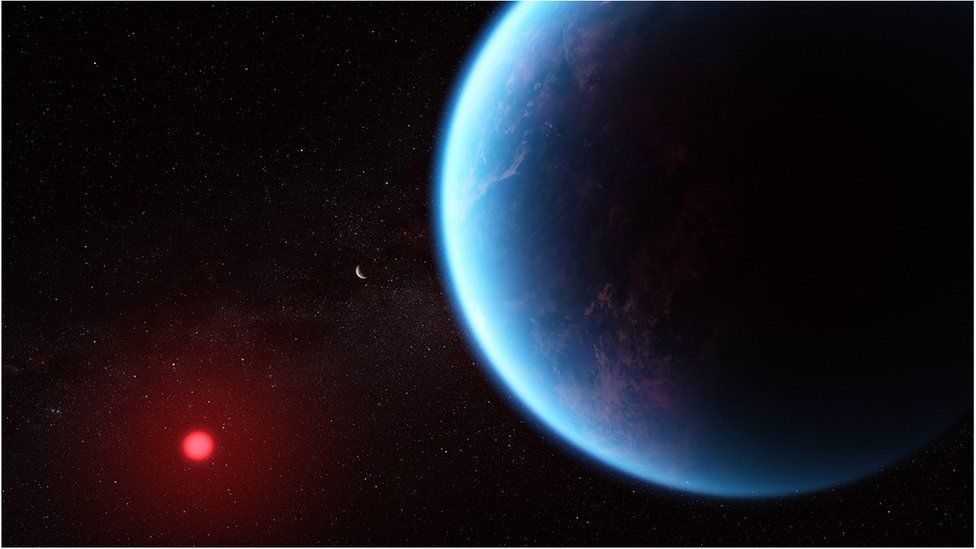-

-
-
Loading

Loading

NASA's James Webb Space Telescope may have discovered a potential sign of life on a distant planet. The telescope may have detected a molecule called dimethyl sulphide (DMS), which is only produced by life on Earth. However, the researchers emphasize that the evidence is not strong and more data is needed to confirm its presence. In addition to DMS, researchers have also detected methane and CO2 in the planet's atmosphere. The presence of these gases suggests that the planet, named K2-18b, may have a water ocean. Professor Nikku Madhusudhan, who led the research at the University of Cambridge, expressed surprise at the results. DMS is primarily emitted by marine phytoplankton on Earth, making its detection on another planet significant. However, Prof. Madhusudhan stressed that the presence of DMS is still tentative, and more data will be necessary to confirm it. Confirmation results are expected within a year. The detection of DMS in a planet orbiting a distant star is a first for astronomers. However, caution is being exercised due to a disputed claim made in 2020 about the presence of another molecule called phosphine, which could indicate the existence of living organisms in the clouds of Venus. Despite the caution, Dr. Robert Massey, deputy director of the Royal Astronomical Society, expressed excitement about the results and the prospect of answering the question of whether we are alone in the Universe. The James Webb Space Telescope is capable of analyzing the light that passes through the atmosphere of distant planets. By deciphering the chemical signature of molecules in the atmosphere, researchers can determine the planet's composition. Although the planet K2-18b is over 1.1 million billion km away, the telescope's capabilities allow for the analysis of the tiny amount of light reaching it. In addition to DMS, the spectral analysis identified significant amounts of methane and carbon dioxide. The proportions of these gases suggest the presence of a water ocean beneath a hydrogen-rich atmosphere. Previous observations by NASA's Hubble Telescope had already detected water vapor on K2-18b, making it an ideal candidate for investigation by the James Webb Space Telescope. The ability of a planet to support life depends on factors such as temperature, the presence of carbon, and the existence of liquid water. Observations from the James Webb Space Telescope indicate that K2-18b meets these criteria. However, the potential presence of DMS is particularly tantalizing because it is not a definitive confirmation of life. What sets K2-18b apart is its size. Unlike Earth-like rocky planets, K2-18b is almost nine times larger. This planet falls into the category of "sub-Neptunes" - exoplanets with sizes between those of Earth and Neptune. These sub-Neptunes are poorly understood, including their atmospheres. Dr. Subhajit Sarkar of Cardiff University, who is also part of the analysis team, explains that while this type of planet does not exist in our solar system, it is the most common type found in the galaxy. Overall, the discovery of potential signs of life on K2-18b is an exciting development. However, further research and data are needed to confirm the presence of DMS and provide more conclusive evidence. The James Webb Space Telescope's capabilities offer promising opportunities for exploring distant worlds and unlocking the mysteries of the Universe.